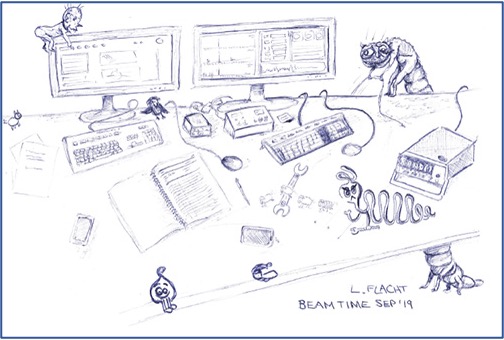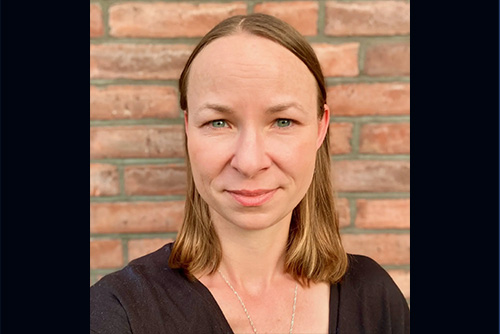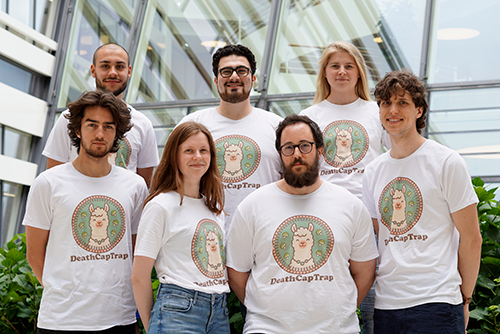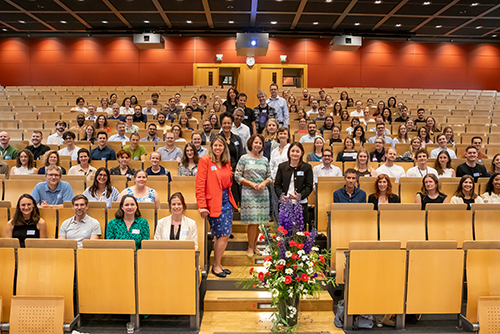Interview with Patrick Cramer
From 9-11 of April the Centre for Structural Systems Biology (CSSB) will be hosting its first international symposium on “Systems in Infection Biology” at the Bernhard Nocht Institute for Tropical Medicine in Hamburg, Germany. The symposium, sponsored by the Joachim Herz Stiftung will focus on how opportunities in systems and structural biology can generate novel and unique prospects in infection research. The symposium features internationally renowned scientists in the fields of structural, systems and infections biology and has sessions covering a range of topics such as Omics in infection biology and Protein-Ligand interactions at all levels.
Symposium speaker and Director of the Max Planck Institute of Biophysical Chemistry in Göttingen, Patrick Cramer, uses structural biology approaches in combination with functional genomics to understand the molecular mechanisms of gene transcription and the principles of genomic regulation in eukaryotic cells. In a preview interview, Cramer discusses some of his recent research on transcription initiation and gives his thoughts regarding how structural and systems biology might impact infection research.
The CSSB brings together approaches and techniques from two fascinating and complex areas of biology – structural and systems biology. What exactly is the difference between structural and systems biology?
Structural biology focuses on understanding the structure and function of proteins and other macromolecules while systems biology seeks to determine the cellular roles and mechanisms of a biological process. With systems approaches we can see whether a process occurs only at certain genes or in certain pathways or if it is a general cellular mechanism. Additionally, systems biology data is unbiased and its analysis could result in the discovery of something completely unexpected such as a new gene function or process.
Could you tell us a bit about how you have used systems biology to compliment your structural biology research?
In my laboratory, we made the decision a couple of years ago to use functional genomics in order to complement our structural data with systemic data. The development of functional genomics methods and computational approaches enables us to unravel the cellular mechanisms of genomic regulation. I believe that it is important to use in vitro as well as in vivo methods as it is only by combining these techniques that we will be able to fully elucidate the mechanisms that underlie a biological process.
Can you give us a preview into what you will be talking about at the Symposium?
Last year, our laboratory discovered how the beginning of a gene is recognized in the region of the genome called the “promoter” region. We published an article in Nature Communications explaining the architecture of the core transcription initiation complex of yeast which closely resembles that of the human initiation complex. During my talk at the CSSB Symposium, I will discuss our latest work which endeavours to provide insights into the mechanism of gene regulation during transcription initiation. This work just appeared in Nature.
How can your methods be applied to infection biology?
Our methods of integrating different structural biology approaches and putting molecular complexes into a cellular context can certainly be applied to almost any field, including the field of infection biology. On the systems level, interesting research is also conducted. For example, Jörg Vogel, the director of the Institute for Molecular Infection Biology at University of Würzburg, who will also be talking at the symposium, is investigating the cellular response to bacterial infection and determining how gene expression is changed upon infection. I am looking forward to hearing him speak and to learning more about the different areas in infection biology that require structural biology approaches.
In general, system biology approaches could lead to the discovery of entirely new players in the infection process. This will not only enable the identification of new targets for structural biology research but will also lead to detection of new targets for drug development. It’s a really exciting area with so many possibilities.
In your opinion, how is the CSSB positioned to become a unique player in the fields of systems and infection biology?
I believe that the cooperation and collaboration already developing between the various CSSB Group leaders enables synergy. CSSB’s close proximity to both Petra III and X FEL will enable new and exciting interdisciplinary research endeavours. I am looking forward to seeing how the CSSB’s various research initiatives develop.



